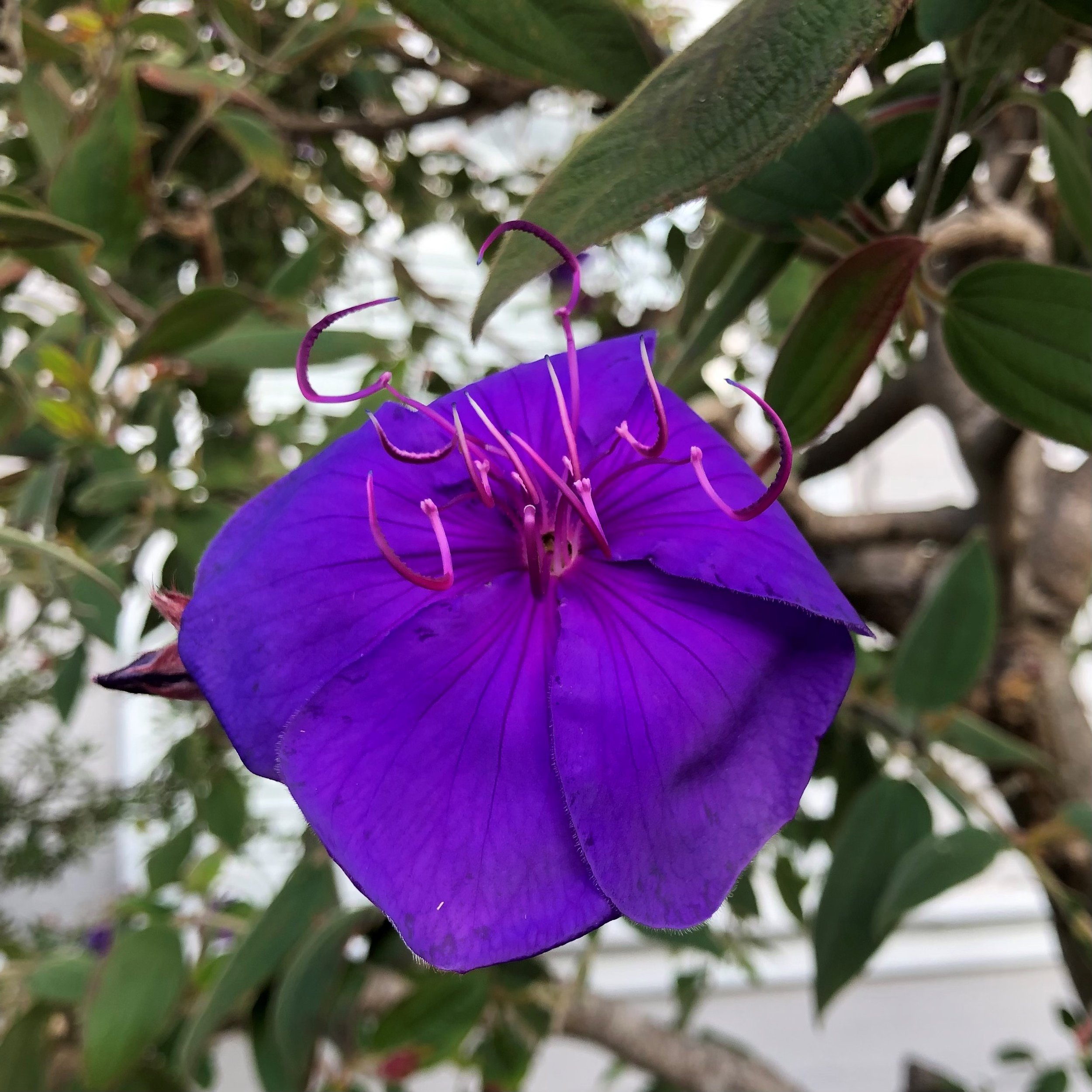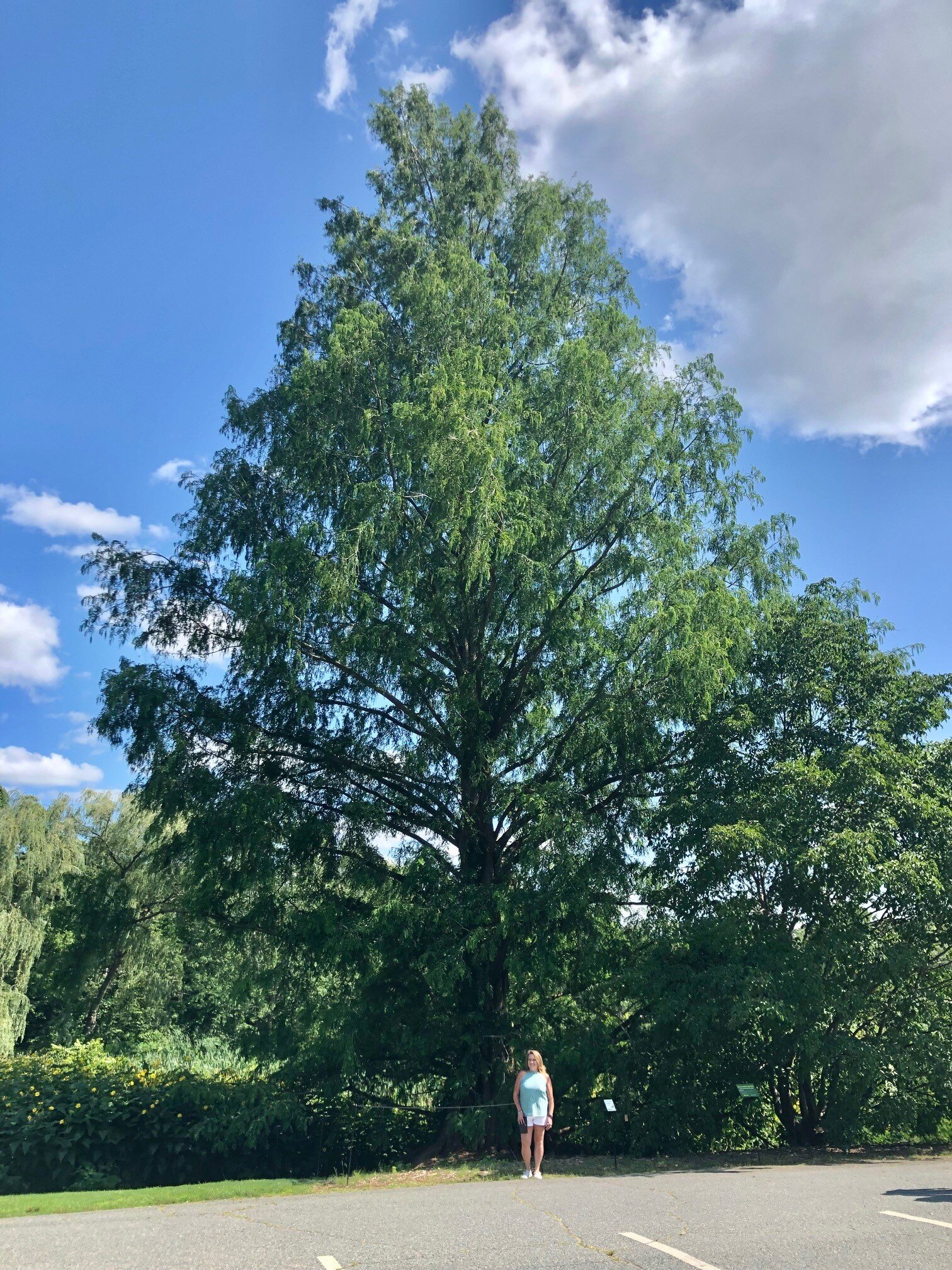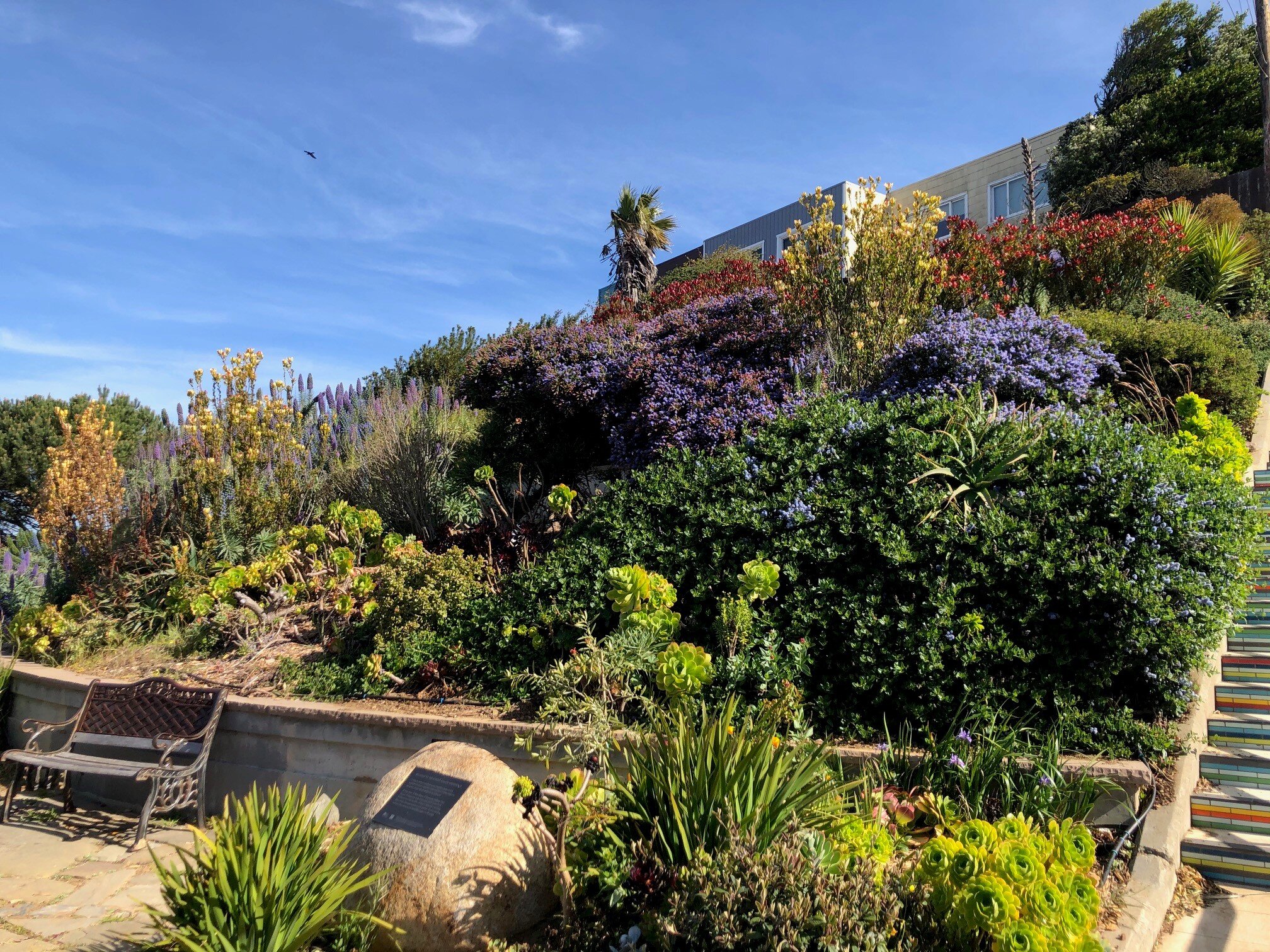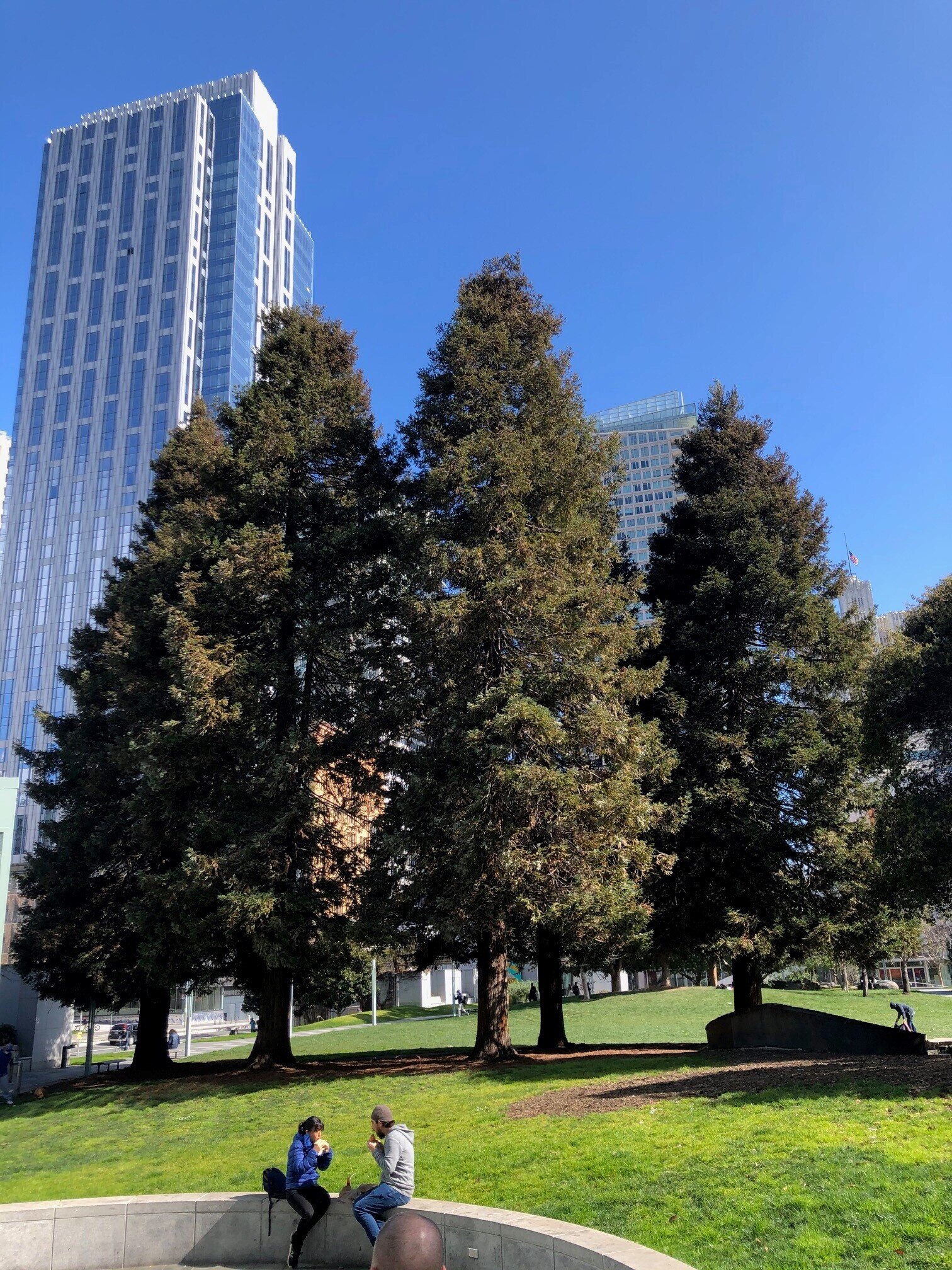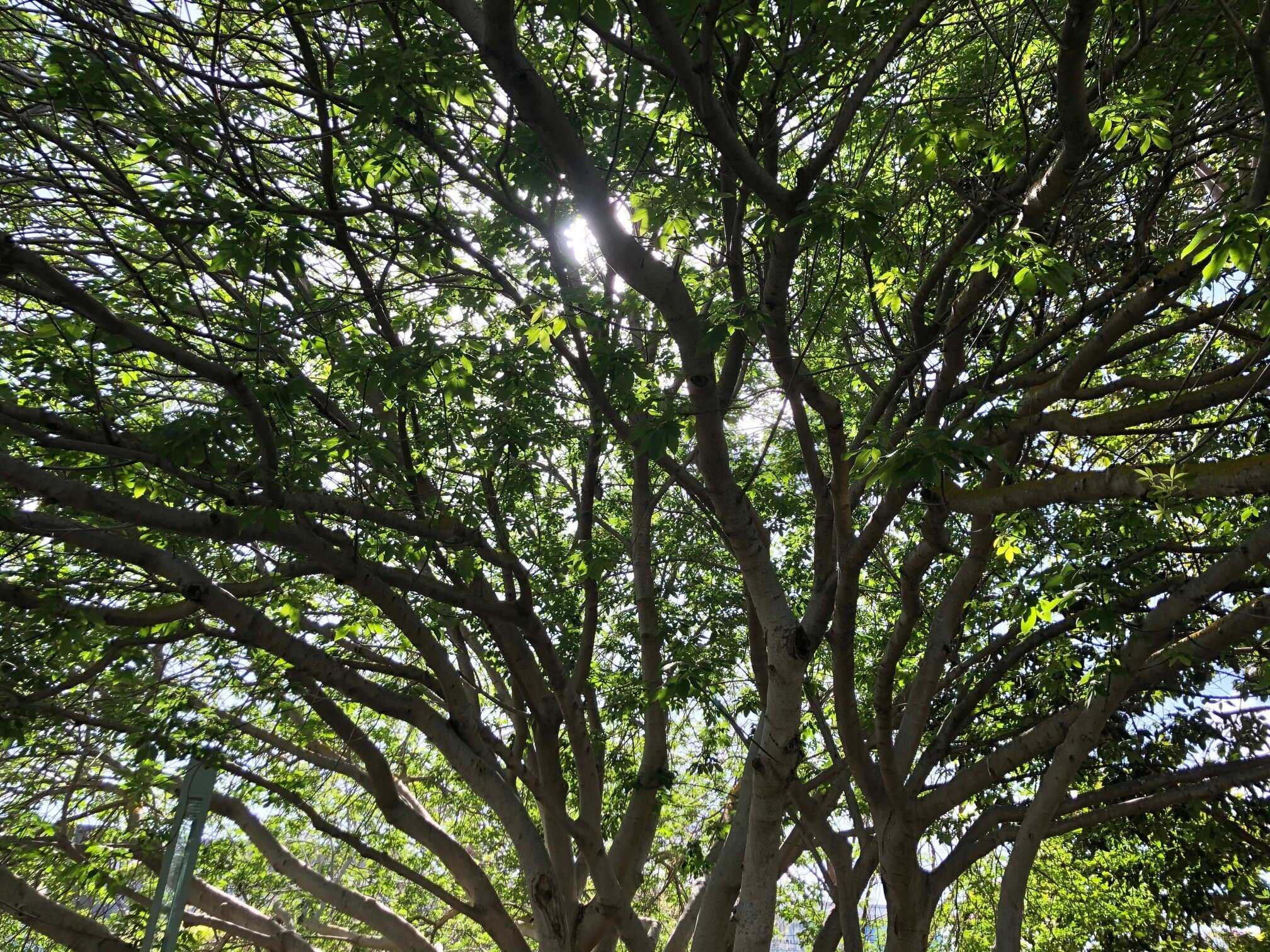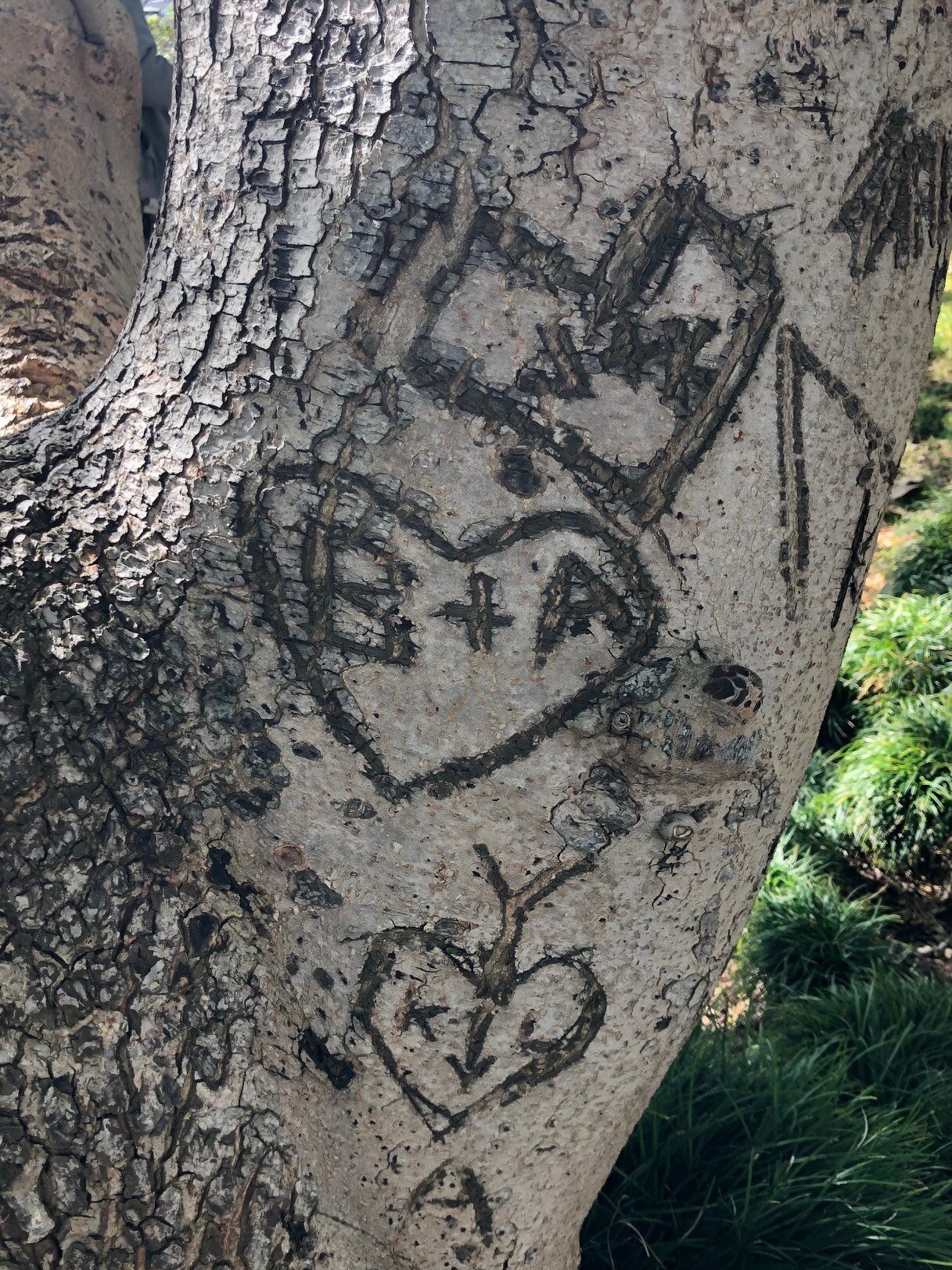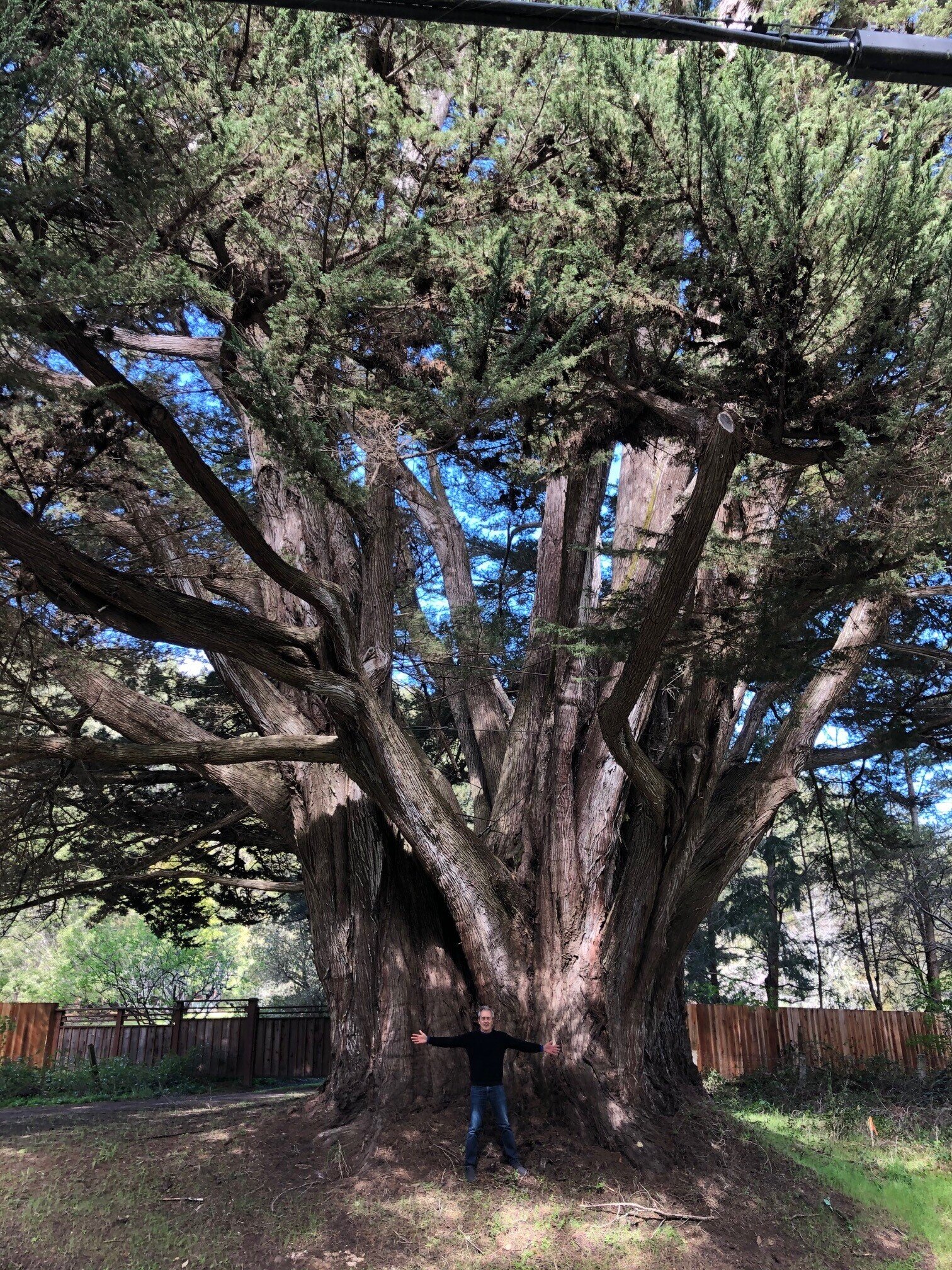Inner Richmond/USF Tree Tour (12-19-21)
’Twas the week before Christmas… The tree geeks disregarded the bitter (for San Francisco) temperatures and met at one of the city’s most distinctive landmark trees: the large California buckeye at the corner of McAllister Street and Willard Street North. This tree could well predate the late 1800s house behind it.
Today’s walk begins at the buckeye and heads east to Parsons Street, then south on Parsons to Fulton Street, where it turns west back to Willard North. At Willard, it heads north to McAllister, west on McAllister, north on Arguello Blvd, west on Cabrillo Street, north on 2nd Avenue, east on Balboa Street, which becomes Turk Blvd when it crosses Arguello. It continues east on Turk to Willard North and then south on Willard to its beginning at McAllister. This walk is barely a mile and a half in length.
Numbered trees are labeled with common and scientific names and country of origin, all written in white chalk on the sidewalk; accompanying numbers, in blue, run from 1 to 29. White arrows on the pavement provide directions whenever a turn is needed.
Our trio of tree geeks responsible for this tour is the same: Jason Dewees (author of Designing with Palms), Richard Turner (retired editor of Pacific Horticulture), and I’m Mike Sullivan, author of Trees of San Francisco.
McAllister Street, Willard to Parsons, north side
California bay (Umbellularia californica)
1. 2694 McAllister California buckeye (Aesculus californica ), California; a spectacular San Francisco native tree! This is one of the best-known individual trees in San Francisco. It is San Francisco’s largest specimen of California buckeye, and as of this writing is on its way to becoming an official landmark tree. It is one of only two trees in the City that are protected by a tree easement, in favor of Friends of the Urban Forest - the owner of the property may not cut down or harm the tree without the permission of FUF.
2. 2694 McAllister California bay (Umbellularia californica), Oregon and California (with outliers in WA and BC)
3. 2678 McAllister London plane tree (Platanus x hispanica), hybrid of eastern American and European species
*Note the boughs of western red cedar (Thuja occidentalis) in the garland around the door to this residence*
4. 2658 McAllister Olive (Olea europaea), Mediterranean Basin
5. 2644 McAllister Forest Pansy eastern redbud (Cercis canadensis ‘Forest Pansy’), Eastern USA and northeast Mexico (come back in spring for its bright magenta flowers)
6. 2644 McAllister Princess tree (Tibouchina urvilleana), SE Brazil (usually a shrub, sometimes becoming a tree; notable for its intense purple flowers; loves San Francisco; note the diverse plantings in this organic garden)
Parsons Street, McAllister to Fulton, east side
7. 14 Parsons Kwanzan flowering cherry (Prunus serrulata ‘Kwanzan’), E Asia (across the street; watch for the big pink flowers in April)
8. 2344 Fulton Sweet michelia (Magnolia doltsopa), Himalayas (tree is on Parsons; note the large and intensely fragrant white flowers)
Fulton Avenue at Willard North, north side
9. 2400 Fulton Mexican fan palm (Washingtonia robusta), Baja California & Sonora, Mexico (this row of palms is in front of the former home of the rock group, the Jefferson Airplane)
Willard North, Fulton to McAllister, west side
Japanese zelkova (Zelkova serrata)
10. 2400 Fulton Japanese zelkova (Zelkova serrata), China, Korea, and Japan (2 trees on N. Willard; among the largest specimens in SF)
11. 335 N. Willard Lemon bottlebrush (Callistemon citrinus), E Australia
McAllister Street, Willard North to Arguello, south side
12. 2719 McAllister Indian laurel fig (Ficus microcarpa ‘Nitida’), S Asia (commonly planted throughout the city)
13. 2733 McAllister Marina strawberry tree (Arbutus ‘Marina’), hybrid of Mediterranean species (first introduced in San Francisco)
Arguello Blvd, McAllister to Cabrillo, west side
14. 829 Arguello Victorian box (Pittosporum undulatum), E Australia (intensely fragrant flowers)
Cabrillo Street, Arguello to 2nd, north side
15. 795 Arguello Bronze loquat (Rhaphiolepis deflexa, syn. Eriobotrya deflexa), China, Taiwan, and Vietnam (3 trees on Cabrillo, recently planted by Friends of the Urban Forest)
16. 696 - 2nd Brazilian pepper tree (Schinus terebinthifolia), Brazil, Argentina, Paraguay (tree is planted on Cabrillo, along with many others in this block of 2nd)
2nd Avenue, Cabrillo to Turk, east side
Brisbane box (Lophostemon confertus)
17. 696 - 2nd Brisbane box (Lophostemon confertus), E Australia (one of SF’s largest specimens)
18. 686 - 2nd Water gum (Tristaniopsis laurina), E Australia (this tree grows in streamside locations in the wild, hence the common name; SF’s most commonly planted street tree)
19. 660 - 2nd Victorian box (Pittosporum undulatum), E Australia (intensely fragrant flowers)
20. 644 - 2nd Cabbage tree or tī kōuka in Māori (Cordyline australis), New Zealand
21. 620 - 2nd Santa Cruz Island ironwood (Lyonothamnus floribundus ssp. asplenifolius), CA’s Channel Islands, except Catalina Island
22. 620 - 2nd Primrose tree (Lagunaria patersonii), Australia & S Pacific Islands
23. 612 - 2nd Red-flowering gum (Corymbia ficifolia), SW Australia (also flowers in white, coral, and orange, like this one)
**Head east (right) on a mostly treeless block of Balboa Street; cross Arguello and continue on Turk Blvd**
Turk Blvd, Arguello to Willard North, south side
24. 3175 Turk Cook pine (Araucaria columnaris), New Caledonia (a twin-trunked specimen is just inside the wooden fence, to the right of this address; similar to Norfolk Island pine, but this narrower, denser species will have a pronounced lean or curve at its base)
25. 3175 Turk Elegant water gum (Tristaniopsis laurina ‘Elegant’), E Australia (note the somewhat larger leaves on this cultivar, compared to the species at #18)
26. 3175 Turk Chinese elm (Ulmus parvifolia), China, Korea, Japan, andVietnam
Willard North, Turk to Golden Gate, west side
27. 143 Willard Purple-leaf plum (Prunus cerasifera ‘Krauter Vesuvius’), Eurasia (a selection of purple-leaf plum from a Bakersfield nursery)
Willard North, Golden Gate to McAllister, east side
28. 232 Willard Mayten (Maytenus boaria), Chile
29. 256 Willard Crape myrtle (Lagerstroemia sp.), Asia (we’re unsure of the species, but the leaves are larger than the typical hybrids found in SF gardens, and they are somewhat more leathery; most others in town have already dropped their leaves for the winter)
This tree walk ends at McAllister and Willard North, where it began.
Happy Holidays, everyone!
Our regular commercial: This walking tour was organized by Mike Sullivan, author of The Trees of San Francisco and webmaster of www.sftrees.com; Jason Dewees, horticulturist at Flora Grubb Gardens and author of Designing with Palms; and Richard Turner, retired editor of Pacific Horticulture magazine . You can follow Mike and Jason on their tree-themed Instagram pages at @sftreeguy and @loulufan. Richard edited another great book on San Francisco trees: Elizabeth McClintock’s Trees of Golden Gate Park. If you’re a tree enthusiast, buy all three books!


